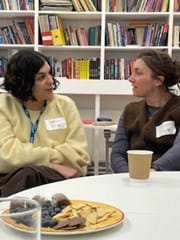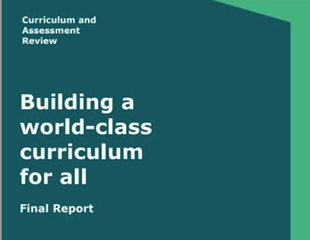Who are the reluctant readers? It’s a question we’ve discussed in our RTRP book group. Some may still be struggling with decoding. Some never caught the reading bug. Others used to be keen but have lost their mojo. What they share is a lack of motivation. Not surprisingly, schools reach for their usual tools: encouragement, praise, stickers, competitions; detention for not getting your reading homework signed; tracking and monitoring. We share the importance of reading: ‘it’s good for you!’ We involve the parents: ‘My kid just doesn’t read! I’ve tried everything!’
Somewhere at the end of this chain of anxiety are the children. And they do feel the anxiety – they will tell you themselves that they ought to read more. Unfortunately, a substantial percentage will also tell you that they don’t enjoy it: 56% of them according to the most recent National Literacy Trust report. This is a problem because the research suggests there is a virtuous circle – the more you read, the better you get at it, the more you enjoy it, and the more you read. However, there is also plenty of research to suggest the kinds of pleasure reading offers to children and young people and how teachers might capitalise on these to help them (re)discover their motivation.
Intellectual Challenge
In ‘The Power of Pleasure Reading: What We Can Learn from the Secret Reading Lives of Teens.’ (Wilhelm, Jeffrey D., and Michael W. Smith, The English Journal, vol. 105, no. 6, 2016) Wilhelm and Smith decided to talk to teenagers about the things they read ‘secretly’ because adults did not value them. They found that ‘Some of the texts, from graphic novels to anime to romances, are not traditionally valued in school. But the kinds of intellectual pleasure our informants took from them certainly are.’
It’s worth interrogating whether some of our young people really are reluctant readers, or only reluctant to read the things we seem to value. We might be narrowly fixated on a certain type of intellectual challenge, such as pre-twentieth-century texts, or ones with difficult vocabulary. But there is both pleasure to be had and a lot to learn about story structure, character building, showing not telling, the scope for reader interpretation and so on from a wide range of texts, including multimodal ones. One of our favourites from RTRP 2021-22 was The Sad Ghosts Club, a poignant graphic novel about anxiety. We found plenty to stimulate literary discussion in our teacher booktalk meeting and the librarians in the group reported that this novel was hardly ever on the shelves and was bringing in new library users. Complex language is not the only way for a book to be stimulating. I’ve recently read Patrice Lawrence’s powerful novel Needle. The main character has stayed with me, and so have the issues Lawrence raises with thought-provoking subtlety, despite the fact that it was written for Barrington Stoke and has a reading age of 8.
Talking About Books
In ‘Reclaiming Pleasure in the Teaching of Reading’ (Language Arts Vol. 89, No. 5, History of the Word, Part I: Centennial Issue (May 2012) published by: National Council of Teachers of English), Sharon Murphy says ‘we know which features create classrooms that motivate readers’ such as ‘the power to engage socially with others in relation to these texts in discussions, engagements that are meaningful and collaborative, and interactions that are like those of the real world.’ Encouraging this kind of meaningful social interaction about books is at the heart of the RTRP approach and something we often discuss in our book talk meetings on the EMC programme.
Book clubs are a great place outside the classroom for pupils to engage in this way about texts, but often attract those who are already keen readers. A suggestion for reluctant readers comes from a teacher who told me they have an ‘invitation only’ book group. The members are mainly oblivious as to why they have been invited (it’s mixed ability, which helps) and happy to be there because it’s exclusive and there are biscuits. Another teacher asks for (and reads) recommendations from her students to create genuine two-way dialogue about books.
For more on how to encourage the kind of interactions Sharon Murphy describes, read RTRP’s core text Tell Me, by Aidan Chambers.
Entertainment and Escape
Wilhelm and Smith’s research (ibid.) found that, for a keen reader, what they call ‘the immersive play pleasure’ is a key motivation. But this pleasure may not be as obvious as we think to those who haven’t yet discovered it for themselves. We can explicitly share and promote ‘immersive play pleasures’, such as wanting to live in the world of the book, or imagining the characters as our friends. Creative responses are great for this, so it’s worth thinking beyond book reviews and PEE. How about creating a map of the world or even a model? Writing to a character? Indulging in some fan fiction to put yourself into your favourite world (Narnia for me!), to bring back a favourite character killed off by the writer (Derek Landy is a serial offender), or mash up a couple of favourite worlds (what happens if Sherlock Holmes teams up with Pippa Fitz-Amobi from A Good Girl’s Guide to Murder?).
Freedom of Choice
The research is pretty conclusive – free choice of reading material is a crucial factor in developing reading for pleasure, and choice and interest are closely related (e.g. Clark, C. and Phythian-Sence, C. (2008) Interesting Choice: The (relative) importance of choice and interest in reader engagement: The National Literacy Trust).
My daughter has always been an enthusiastic reader. Now in year 11, she’s just finished reading Jane Eyre (suggested by a much-loved English teacher), but is also re-reading The Borrowers, a childhood favourite, and a lot of fan fiction. As an English teacher I might be tempted to tell her that The Borrowers isn’t challenging enough, or that fan fiction isn’t ‘proper’ reading. But a look at my own bedside table reveals a similar mix of high and low culture, intellectual stimulation and comfort reads. Talking to my daughter about her choices is interesting. She loved Jane Eyre (and was delighted to discover the origin of the much-memed line ‘Reader, I married him’). But she read it in chunks over several months and not when she was tired. The Borrowers is a comfort read, but also she’s noticing things in it that she didn’t notice when she was younger. The fan fiction is pure ‘you’ll laugh, you’ll cry’ pleasure (and inspires her to write and publish her own too).
If we can truly allow free choice and embrace (almost) anything kids might choose, more of them will identify as readers and they are more likely to get pleasure from their reading. That is not to say that teachers and librarians have no role. To have the opportunity to make a choice, an appealing range has to be on offer. A teacher or librarian who has a good knowledge of children's and YA fiction can make suggestions and find the right book for the right child.
‘Pleasure cannot be taught, only shared’
This is a quote from a presentation by Alison David of Farshore books at the RTRP conference last year and it’s the unofficial motto of EMC’s RTRP group. To motivate reluctant readers we have to leave aside our usual tools and instead find ways to share the pleasures of reading.




